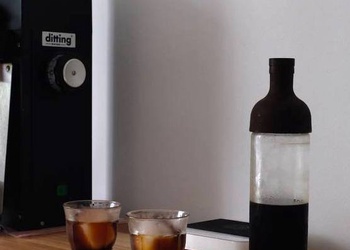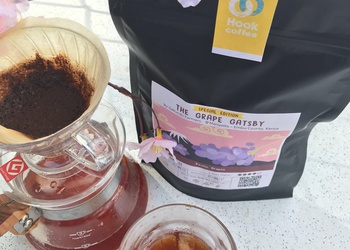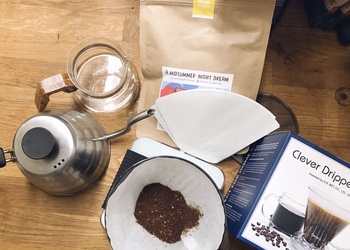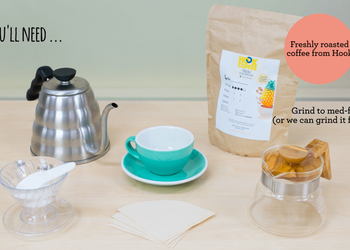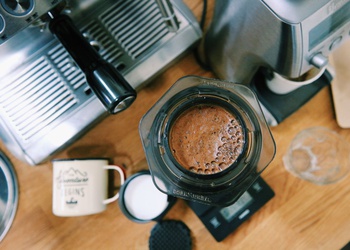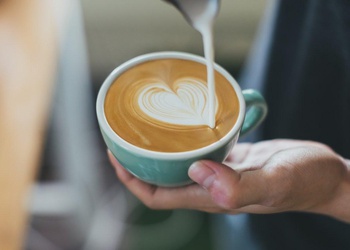THEHOOKBLOG
Coffee Fuelled Thoughts, Stories and Ideas
Dialing in With Immersion Brewing
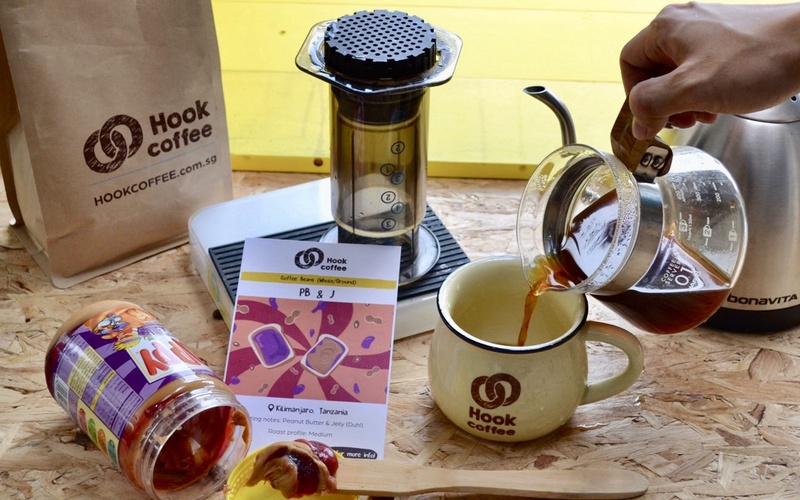
Hey there coffee family!
Before we get started, make sure you check out our most recent giveaway! You could win an aeropress and a delicious bag of beans that tastes like a peanut butter and jelly sandwich. We've been using the aeropress to carefully pull out these delicious flavor notes.
During our tasting escapades, we decided to do a write up on Immersion brew techniques. We hope it helps!
Immersion brewing is one of the easiest ways to pull delicious notes out of your coffee. This form of coffee extraction is controlled - which is why many suggest that the novice try immersion brewing first!
Many methods of home brewing seem like science experiments at first glance. Scales, glass beakers, decanters, and thermometers are involved in the brewing process. Don't let this intimidate you!
We wrote up a little guide that covers the bases of immersion brewing. How does one dial in perfect flavor? What exactly is immersion? What's the best way to approach your coffee before brewing? We cover all of this!
So What is Immersion Brewing?
You make recognize some of these methods:
- Clever Dripper: an incredibly easy to use device that steeps coffee like a loose leaf tea. Once your coffee has been extracted to perfection, just trigger the release valve!
- French Press: this is a classic. Let the coffee extract, and push down the lever to filter. The result is a coffee with a juicy, full body.
- Aeropress: one of the most variable methods on the market. Everything from agitation, to filtering method can be changed in a flash. Perfect for those who like to experiment!
These are all considered immersion brewing methods. They are mechanisms that allow for full water immersion of coffee grounds. With these methods, coffee essentially soaks in water for an allotted period of time, and it is then decanted.
[Pour over brewing methods are a bit different. With pour overs, water touches the coffee for a brief period of time before it drips into a vessel.]
Immersion brewing is known for exhibiting mouthfeel and body over clarity. This is because immersion brewed coffee contains a high number of brew colloids (tiny particles of coffee that make it through a filter's micro-pores).
Brew colloids add to body and diminish flavor. This sounds like a negative trade-off, but it's not. The experience of coffee is more than just flavor. It's about aroma, flavor, and mouthfeel. Immersion brewing yields cups of coffee that can be described as juicy, dry (like a dry red wine), or even lively.
Dialing in Grind
For more information on the importance of grind size, read our coffee variables blog here.
You'll most likely want to use a medium coarse grind for immersion methods. If you're using a pressurized method like an aeropress, you can go much finer, as you have control of decanting time.
A medium coarse grind will assure minimal clogs when decanting the brew. When clogs occur, excess time is introduced in the brewing phase. The longer your grinds are in contact with water, the more they brew.
Dialing in Temperature
Specialty standards state that coffee should be brewed anywhere from 90.5 - 96 degrees Celsius. These values may differ slightly between craft coffee experts, but this is close to the "safe" range.
These temperatures aren't set in stone however. If you're using a fine grind, you could brew at lower temperatures. Look at some world aeropress championship recipes. Many of them are NOT in the specialty target range. They use lower temperatures to pull soft, fruity notes out of the coffee without over extracting the brew.
Low-temperature brewing can be accomplished when time is considered.
Think about it:
More time = more extraction
Less time = less extraction
Higher temperature = more extraction
Lower temperature = less extraction
So if you compensate by using a lower temperature with longer brew time, your coffee can still taste balanced and delicious!
Dialing in Time
The time you spend brewing should coincide with your grind size and temperature.
Start at 3 minutes with a medium coarse grind. Set your temperature at 92 degrees Celsius.
Now, how does it taste?
If it's slightly over extracted, lower your temperature OR finish brewing 30 seconds earlier.
If it's slightly under extracted, raise your temperature OR extend the brew time.
If the coffee straight up tastes BAD, change your grind and start over.
Dialing in agitation
If you feel like your coffee could taste more balanced, try giving your brew a stir.
Stirring aids in extraction, but most of all, it incorporates wet coffee grounds.
Incorporation helps the coffee to extract evenly. If you feel like your brew is both over and under extracted, try adding some agitation. It can make a world of difference!
The best times to stir are toward the beginning or middle of brewing.
Dialing in Recap
- Always start with grind. Try medium coarse first.
- Then set your temp within 90.5 - 96 degrees Celsius
- Brew for three minutes
- Taste the coffee. NOW make adjustments.
Dialing in takes time. After a few months of experimenting and coffee alchemy, you'll be adapting like a true barista.
Happy dialing everyone!
The Hook Coffee Team
